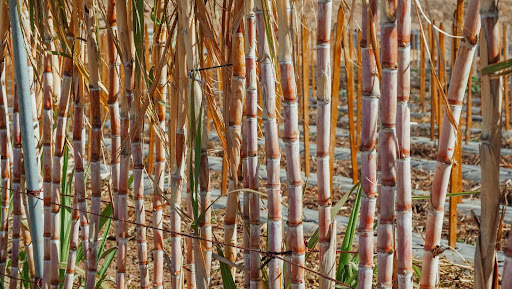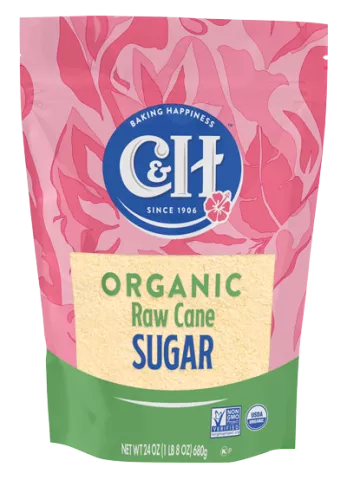The Scientific Research Behind Cane Sugar Processing: Exactly How Sweetness is Improved
The Scientific Research Behind Cane Sugar Processing: Exactly How Sweetness is Improved
Blog Article
Exploring the Comprehensive Tips Involved in Walking Stick Sugar Processing From Gathering to Improvement
The procedure of cane sugar production includes a collection of detailed actions, starting with the cautious harvesting of sugarcane and culminating in the refinement phases that ensure the end product fulfills industry standards. Each stage, from the extraction of juice to the filtration and condensation procedures, plays a crucial function in identifying the quality and personality of the sugar. Recognizing these stages not only highlights the intricacy of sugar production but also raises essential concerns about effectiveness, sustainability, and technology in the sector. What implications do these aspects have for future methods?
Harvesting Sugarcane
Harvesting sugarcane is a crucial action in the walking cane sugar processing chain, as it directly influences the top quality and return of the end product. Appropriate timing and methods are essential throughout this phase to guarantee ideal sugar web content and decrease losses. Typically, sugarcane is harvested when it gets to maturation, typically 12 to 18 months after growing, characterized by a high sucrose concentration.

Post-harvest, the sugarcane should be refined promptly to stop sucrose destruction. Ideally, gathered cane should be moved to processing centers within 24-hour to preserve sugar high quality. Therefore, effective logistical preparation is important to keep the integrity of the harvested crop throughout the supply chain.
Extraction Refine

The smashed walking cane goes through a series of pressing procedures to make the most of juice healing. Generally, hot water is splashed onto the crushed walking cane, creating a countercurrent flow that assists liquify the sugar while additionally helping in the removal procedure. The juice gathered from this operation consists of not only sugar however likewise various organic substances and pollutants.

To boost removal performance, some facilities may use diffusion approaches, where the sugarcane is taken in warm water, allowing the soluble sugars to diffuse into the liquid. The resulting juice, rich in sucrose, is then directed to subsequent processing stages, laying the foundation for filtration and improvement. The extraction process is hence crucial in determining the quality and return of the final sugar product.
Filtration Methods
The filtration methods utilized in walking cane sugar processing are essential for changing the raw juice into a high-grade sugar item. These approaches primarily intend to eliminate impurities, such as dirt, plant materials, and not natural materials, which can detrimentally impact the final item's taste and shade.
This procedure includes adding lime and warm to the raw juice, which facilitates the coagulation of pollutants. In addition, the use of phosphoric acid can improve the clarification process by additional binding contaminations.
One more substantial technique is carbonatation, where carbon dioxide is introduced to the made clear juice. This reaction produces calcium carbonate, which captures continuing to be pollutants and promotes their elimination.
Additionally, triggered carbon treatment might be put on adsorb any type of continuing to be colorants and natural impurities, guaranteeing a more polished item. The combination of these methods effectively prepares the sugar juice for succeeding action in the refining procedure, setting the phase for the manufacturing of high-quality walking stick sugar.
Formation Methods
After the purification stage, the following important step in walking cane sugar handling includes crystallization techniques, which play a critical function in transforming the made clear juice into solid sugar. This procedure usually employs 2 key techniques: spontaneous formation and regulated condensation.
In spontaneous condensation, supersaturated sugar solutions are allowed to cool down naturally, leading to the development of sugar crystals over time. This method enables for the uniform growth have a peek at this website of sugar crystals and greater purity.
During formation, the cleared up juice is focused through evaporation, boosting its sugar web content until it gets to supersaturation. When this factor is achieved, either technique can promote visit the site the condensation process. Cane Sugar Processing. The resultant sugar crystals are then divided from the continuing to be syrup via centrifugation
Eventually, the selection of condensation technique influences the high quality, size, and pureness of the final sugar item, making this step necessary in the general walking cane sugar processing treatment.
Refinement and Packaging
How can the pureness and top quality of walking stick sugar be additionally boosted after condensation? The refinement process plays a vital role in accomplishing top quality walking cane sugar.
Next, the sugar is subjected to a process called centrifugation, where it is rotated at high rates to separate the purified sugar crystals from the staying liquid. After centrifugation, the sugar is frequently more fine-tuned via a method called carbonization or phosphatation, which uses turned on carbon or phosphoric acid to get rid of shade and off-flavors.
Once refined, the sugar is dried to attain the preferred dampness material, ensuring that it continues to be secure throughout storage and transportation. The final action entails packaging the polished sugar in moisture-proof and impermeable containers to keep its quality and avoid contamination. Cane Sugar Processing. Appropriate product packaging not just extends life span but additionally promotes easy handling and distribution, ensuring that customers obtain sugar that meets the highest requirements of pureness and top quality
Final Thought
The extensive steps entailed in walking cane sugar handling, from the meticulous harvesting of sugarcane to the detailed refinement and product packaging phases, highlight the significance of each stage in making sure high-grade sugar manufacturing. Optimum harvesting methods, reliable removal methods, and extensive purification processes collectively add to the last product's pureness and stability. The condensation and subsequent packaging practices better enhance the stability and life span of the sugar, highlighting the intricacy and precision inherent try this in this necessary agricultural sector.
The process of cane sugar production includes a collection of complex steps, beginning with the cautious harvesting of sugarcane and finishing in the refinement stages that make certain the last product fulfills sector standards. Ideally, collected walking stick needs to be transported to refining facilities within 24 hours to protect sugar top quality.In spontaneous crystallization, supersaturated sugar remedies are permitted to cool down normally, leading to the formation of sugar crystals over time - Cane Sugar Processing. The refinement process plays an essential duty in accomplishing high-grade cane sugar.The thorough actions involved in cane sugar handling, from the careful harvesting of sugarcane to the elaborate improvement and product packaging phases, highlight the value of each phase in guaranteeing top notch sugar production
Report this page